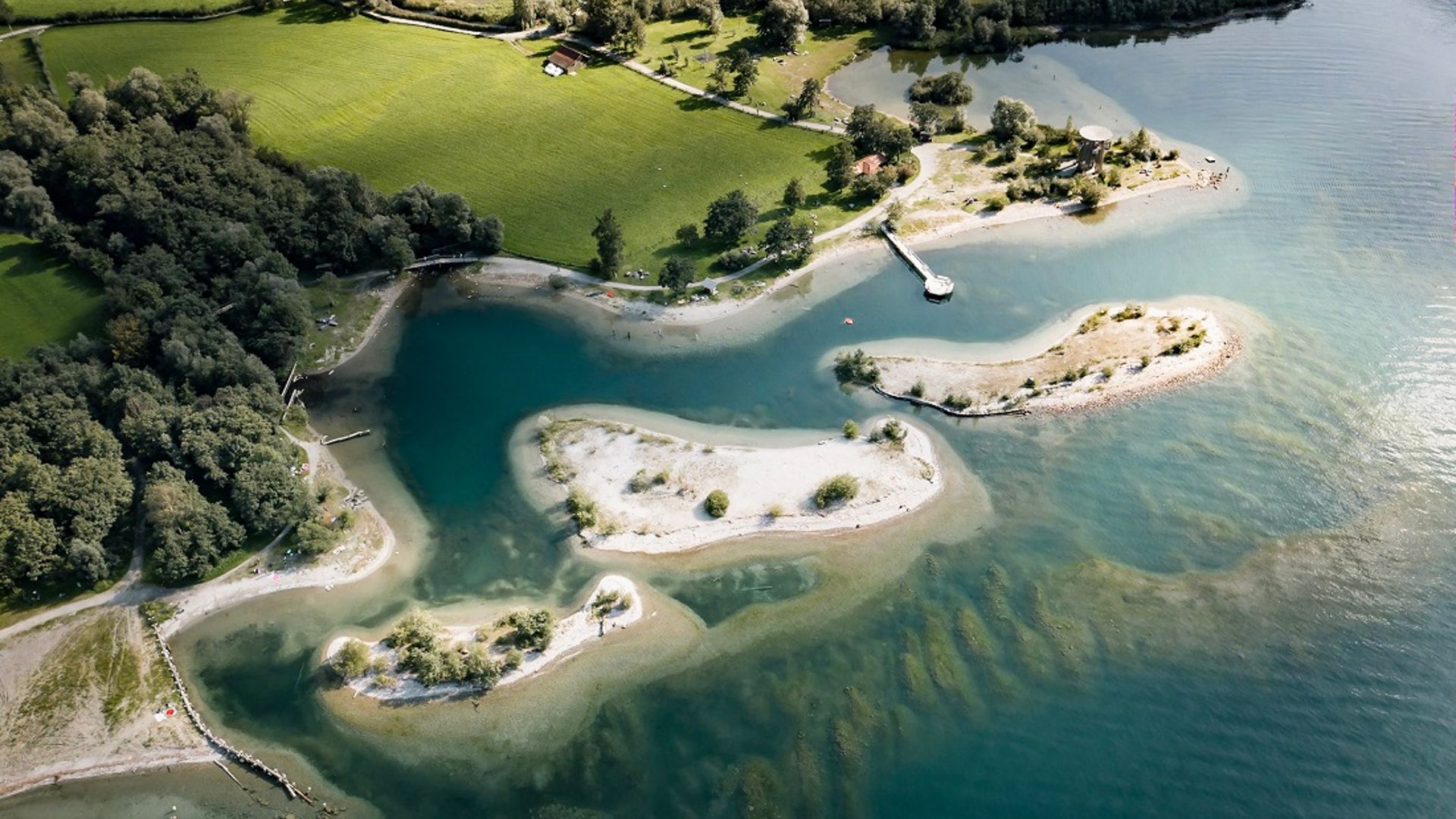Reuss delta
Nature conservation and recreation area
Pleasing everyone is an art that nobody can do. No way! There have only been winners in the renaturalization of the Reuss delta. The six bathing and nature conservation islands have added another attraction to Uri.
Something unique has been created between Flüelen and Seedorf
So what now? Blick” compares them to the Maldives, while the program ‘Schweiz aktuell’ attests to the ‘Caribbean charm’ of the islands in Lake Uri. But regardless of whether comparisons are made with the South Seas or the Caribbean: Something unique has been created in the Reuss Delta between Flüelen and Seedorf. An artificially sculpted landscape in which bathers and walkers feel just as at home as fish and birds; an area in which nature conservation, agriculture and gravel extraction go hand in hand.
It was not foreseeable that such a happy ending would come about in 1987, when the Reuss once again burst its banks and flooded large parts of the Uri valley floor. For many people in Uri, this was a déjà vu experience. After all, the Reuss has always been a problem child. When the snow melted and the river flooded, it constantly burst its banks. To tame it, the canton of Uri built a canal in the middle of the 19th century. Instead of meandering through the farmers' fields, the Reuss now flowed straight into the lake.
Sand, rubble and excavator holes
But that didn't last long. Like every river, the Reuss carries sand and debris with it. In a natural river course, the river washes this debris out into the lake at the mouth, creating a natural delta. However, this was no longer possible after the correction of the Reuss. The sand carried along was deposited upstream and formed a kind of cone. As a result, the blocked drainage led to new floods. Between 1900 and 1912, the people of Uri therefore extended the canal far out into the lake. In addition, the company Arnold & Co. began to dredge sand and gravel from the lake on a commercial basis.
The consequences were fatal: dredged holes and excessively steep embankments were created near the shore, which were life-threatening for non-swimmers. The bottom of the lake also began to slide, and the lack of shallow water zones caused the waves to crash against the shore with full force. The mainland was washed away. By the mid-1980s, the lake had eroded three hundred meters inland. Action had to be taken to prevent further erosion. Conflicts of interest were resolved by planning a near-natural delta where animals could live and plants could thrive, where the gravel dredgers would have just as much space as fishing boats, bicycles and farmers' tractors. The people of Uri provided the necessary legal basis: they approved the law on the Reuss Delta in 1985 with 71 percent of votes in favor.
Gotthard stone for the island building
The first step was to remove the channel that protruded into the lake. But where would the material come from to create a shallow water zone? In 1987, nature came to the rescue in the form of the storm mentioned at the beginning. The flood washed up vast quantities of sand, rubble and branches. This made it possible to build the embankment and the first group of islands. The next support came from the Swiss electorate, who said yes to the NRLA in 1992. The longest railroad tunnel in the world was thus built at the Gotthard. Where to put the excavated material? Of course: into Lake Uri!
The builders were open to the idea of using the excavated material to create islands in the lake. As a result, 3.3 million tons of tunnel rock, which normally has to be disposed of laboriously and expensively, was dumped into the lake. A win-win situation: on the one hand, the rock was disposed of sustainably, and on the other, a delta was created at the mouth of the Reuss that is second to none in Switzerland, including a lagoon landscape with six islands. While the three Lorelei islands with their beaches are ideal for swimming, the three Neptune islands are left to the flora and fauna.
Since then, nature has been able to develop undisturbed in the protection of the islands. Today, the Reuss delta is home to a reedbed where rare plants grow and birds breed, with shallow spawning grounds for pike, roach and perch, sandy beaches for bathers and cycle paths for day-trippers. The only reminder that the islands are actually made of Gotthard material is a boulder symbolically perched on an island. “Eastern section, Amsteg section, tunnel meter 107550”, reads the plaque that adorns the monolith. Did someone say Maldives or Caribbean?
Experience the Reuss Delta
The Reuss Delta can be easily explored on foot by following the “Swiss Path” from Flüelen railroad station in the direction of Seedorf. In addition to bathing and picnic areas, there are viewing towers from which you can admire the flora and fauna as well as the mountains of Uri.
Getting there: with the Treno Gottardo to Flüelen
